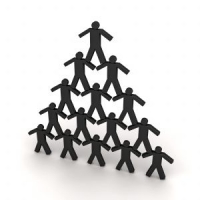What Makes for a Healthy, Functioning Self-Organizing Team?

Any conversation about self-organizing teams will always generate a crowd response, as this LinkedIn discussion shows with more than 330 comments. If you Google the phrase “building self-organizing teams,” you will see nearly 45 million results. Some of the results show articles with captivating headlines like “How to Build Super Star Self Organizing Teams” to articles addressing the typical myths and misconceptions of self-organizing (SO) teams.
It seems there are several ingredients that everyone seems to agree on for building SO teams.
A good leader is an essential ingredient in SO teams. Mike Cohn shares some vivid examples of how leaders should monitor the behavior and fix team issues. Giving a free hand to the team members or allowing them to do whatever they want won’t result in an effective SO team.
The leader should have servant-leadership qualities, as well. As Jim Highsmith says, implementing a light-touch-leadership style is essential, and decision making should be delegated to the lowest level possible.
In a SO team, the team members are encouraged to volunteer for tasks; there is no one assigning the tasks or micromanaging the progress. It is important for the team to work collaboratively. I observed a team in which its members volunteered for the tasks, but they worked separately sitting in different corners of the office. This is not helpful in building a SO team.
Apart from covering highly useful practices, I have observed that many authors neglect significantly impactful team dynamics.
You need to ensure that your team has a clear direction and a goal. The absence of a goal leads to a loss of focused energy and, in turn, a loss of passion. In the long run, the team will fall apart.
Note that SO teams aren’t created out of thin air like magic. The team members need to spend a lot of time together, and over a period of time they will self-organize. Considering the Tuckman’s model of group development, you can see that the team becomes self-organizing by the time it is in the performing stage. Yves Hanoulle draws a good analogy between parenting and the situational leadership needed to build SO teams.
You might be wondering, what is the litmus test for a SO team? Check out this article to learn some disturbance strategies.
Before I conclude let me ask you, is your team self-organizing? Do you have any tips to share in building a SO team?

